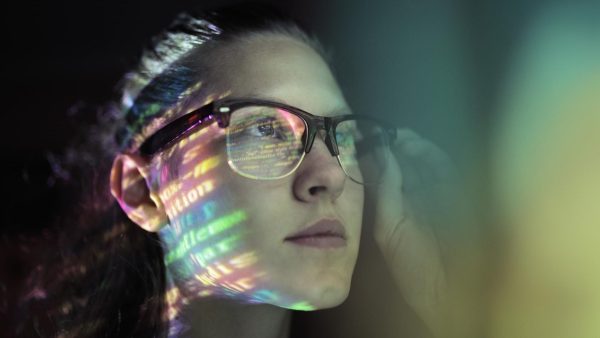Introduction
Imaginad por un momento… ¿Cómo consumisteis contenido hace 10 años? ¿Y cómo lo hacéis hoy? Ahora pensad en el futuro: ¿Qué tecnologías creéis que dominarán la próxima década? Pero, ¿cómo se están materializando estas oportunidades en el presente? ¿Qué tecnologías y tendencias están moldeando el futuro del contenido que consumimos cada día?”
The present of content
We live in an era where content is literally everywhere. According to GlobalData, the OTT market, which includes media, communication, and streaming, will be worth $400 billion by 2025, an amount similar to the GDP of countries such as Denmark or Chile, and is expected to grow to almost $3 trillion, surpassing Italy’s current GDP. This shows the enormous impact and expansion of this sector in less than a decade.
Not all of it is passive entertainment. Interactive content is redefining the user experience. Have you ever tried a series where you choose the ending? It’s like being the director for a day… although, if you’re like me, you’ll probably end up creating narrative chaos.
These types of experiences, along with AI-driven personalization, are the most exciting part of the industry right now.
Speaking of personalization… Have you ever noticed that after watching a romantic movie, you get recommended three dark thrillers? AI still has room for improvement, but the truth is that it’s transforming how we discover and consume content. According to a recent report, investment in AI for media will exceed $4 billion by 2028. Now that’s love for algorithms!
So here we are, in the midst of an audiovisual revolution where every click counts. Are you ready to continue exploring this fascinating world?
The future of content
If the present already surprises us, imagine what the future holds. Smart glasses are set to revolutionize how we consume content.
According to CES 2025, these glasses will not only integrate augmented reality, but also offer immersive experiences such as real-time translation, visual navigation, and even the ability to interact with content in our physical environment.
Can you imagine watching a series and having the main character talk directly to you? This level of immersion is closer than we think.
But that’s not all. Hybrid models are leading the way. They combine subscriptions with personalized advertising to offer consumer flexibility and combat platform fatigue.
According to Darwin CX, this strategy not only maximizes revenue, but also allows platforms to attract more diverse audiences. It’s a balance between giving options and keeping us hooked.
And let’s talk about cultural diversification, because this is a key point for the future of content. This is no coincidence; it’s the result of a well-thought-out localization strategy that connects with the emotions and cultures of each market.
Now, how does all this fit into our lives? Imagine a future where smart glasses suggest what to watch based on your mood or where you can actively participate in the narrative of a series.
Artificial intelligence isn’t just personalizing recommendations; it’s transforming how we interact with content. For example, in the case of sporting events offered by Movistar Plus+, AI allows for greater agility when sharing highlights of those events on the interface and social media.
According to MIT Technology Review, advances in multimodal models will enable smart glasses to recognize images, text, and audio to deliver fully integrated experiences.
The future of audiovisual content will not just be about consuming it; it will be about living it. From immersive experiences to interactive narratives, we are on the cusp of a revolution that will change our relationship with entertainment forever.
So I leave you with this question: Are you ready to be part of this change? Because the future of content is not something we simply observe… it is something we create together.
Do you want to be part of this future?
In short, we are experiencing an unprecedented transformation in the world of audiovisual content.
Emerging technologies, such as smart glasses and AI, are redefining how we interact with entertainment, taking us from passive spectators to active participants. Hybrid models offer us flexibility, while cultural diversification connects us with stories that transcend borders.
So I leave you with this thought: the future of content is not something we simply observe. It is something we build together, one click at a time, one story at a time. This is not just a technological change; it is a revolution in how we create, share, and experience content. The question is not whether you are ready for this future… but how you are going to be part of it.









